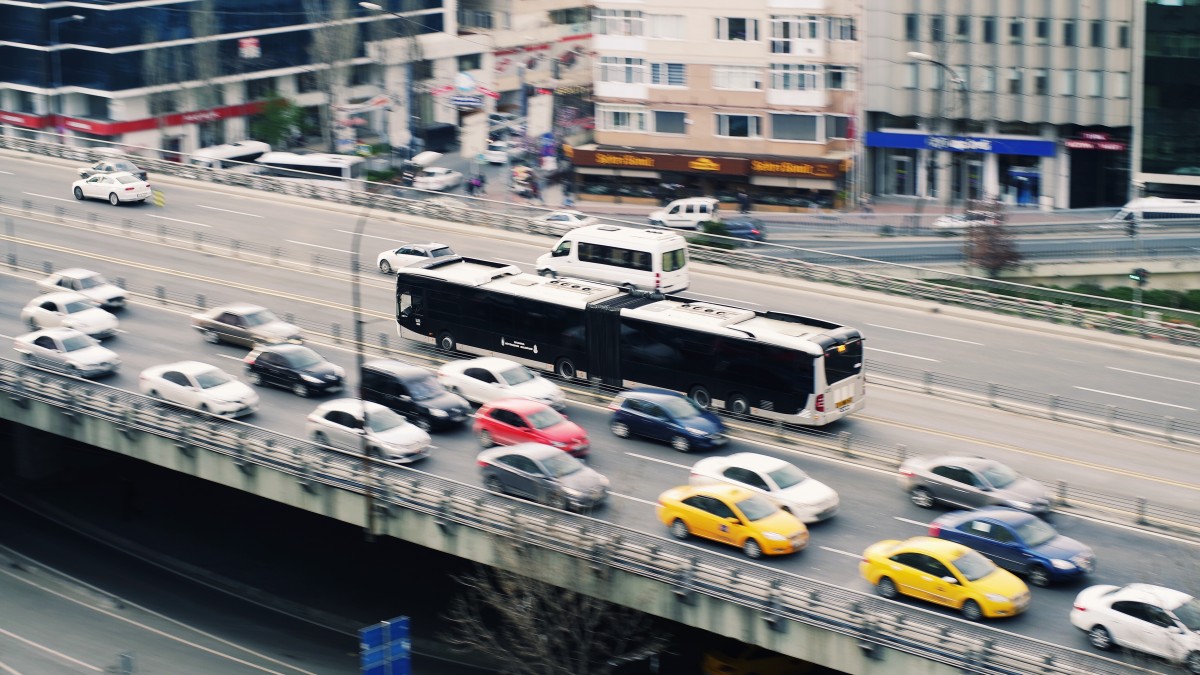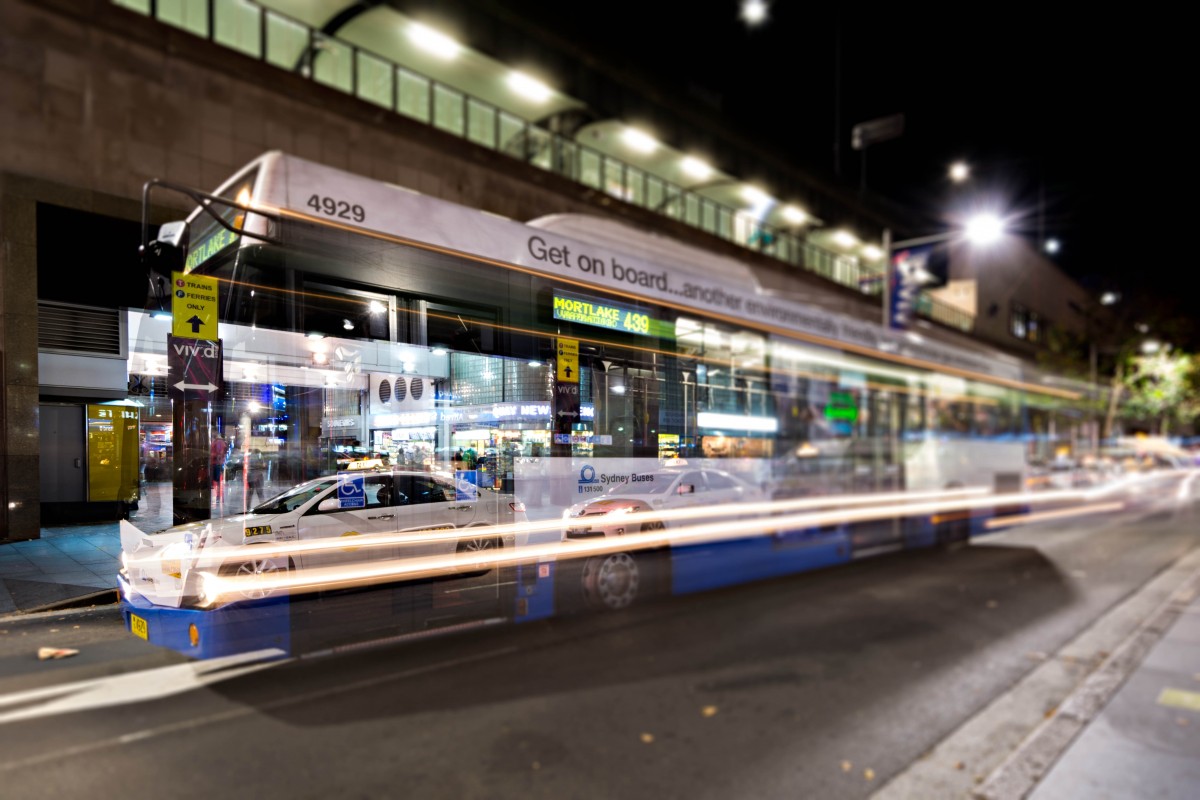These are heady times in the transportation sector. In the past decade we’ve seen the rise of third generation bikeshare systems; private dockless bike share; the race to develop electric, connected and automated vehicles (CAVs); demographic and lifestyle preference changes; the re-emergence of private mircotransit; numerous local Smart Cities initiatives; and the ever-growing prevalence of Transportation Network Companies such as Uber and Lyft. Interest from Silicon Valley investors in transportation-focused startups has never been higher—the transportation industry is entering a new era of unprecedented mobility and opportunity.
But regardless of the hype and apparent momentum, is this “new era” something that we want? And will its positive impacts outweigh its negative ones? Put another way: what does the Transportation Network Companies (TNCs) and the CAV revolution mean for our communities, and more specifically, our public transit systems? Some, such as Zipcar founder Robin Chase, have suggested that, broadly speaking, two opposite outcomes are possible: heaven or hell.
On the one hand, if one is to believe Silicon Valley and its various boosters in the media, TNCs and CAVs will usher in an epoch of unprecedented mobility, freedom, and car-free living. Fleets of driverless cars will roam the streets, available when and where you want them, ready to whisk you away directly to your destination. In addition to the oft-repeated benefits of improved roadway safety and human productivity, some argue that this revolution will allow more households to opt for car-free lifestyles, since TNCs so closely mimic the convenience of car ownership (on-demand, point-to-point mobility) without the hassles (parking, insurance, maintenance). This in turn, or so the argument goes, will expand the market of potential public transit users, pedestrians, and cyclists. Convince people to get rid of their cars and they’ll walk, bike, and take transit more often (and, of course, take Uber and Lyft).
Furthermore, thanks to their supposedly more cost-effective business model, TNCs will be able to pick up the slack where public transit falls short. Through mutually beneficial partnerships, TNCs will take on services which are currently difficult and expensive for public transit agencies to provide. These services include paratransit (with its need for point-to-point mobility), service in low-density communities (where demand is spread out), and late-night service (when demand is low). These types of partnerships, in fact, have already been implemented across the country to varying degrees of success.
Under this “heaven” scenario, the relationship between TNCs, CAVs, and public transit agencies is symbiotic: each of these services complement one another and contribute to the others’ success. The more people use a TNC service, the more they will use public transit. TNCs, with their technology platforms and efficient business models, will allow transit agencies to focus on high-ridership corridors while TNCs taking on the hard-to-serve populations, areas, and times where they will still be able to eke out a profit. Everyone wins, most of all the consumer, with more choice and cheaper costs.
There is increasing reason to believe, however, that this “heaven” scenario is not as inevitable as Silicon Valley would like you to believe. Others have argued that the opposite is possible, with disastrous consequences for our cities, our transportation systems, and ultimately, our quality of life. Under this scenario, TNCs would continue to operate largely as they currently do: in single-occupant, gasoline-powered vehicles. Studies have begun to show that the majority of trips taken with TNCs are with a single rider. Factor in the “deadhead” (time spent driving between trips), and the actual occupancy rate dips below one. All of these extra single-occupancy vehicles (SOVs) on the roads could inevitably result in a dramatic increase in the number of total Vehicle Miles Travelled (VMT), with disastrous consequences for the environment and roadway congestion, particularly in larger cities with limited roadway capacity. This, in turn, would generate demand for more roadway capacity to handle the increase in VMT, thus competing with transit, bikes, and pedestrians for right-of-way and public dollars. We’ve only recently begun to dig ourselves out from the glory days of highway expansion, suburban sprawl, and urban disinvestment, and a dramatic increase in VMT could pose a setback to our progress in making our cities more livable and multi-modal.
The impacts of this scenario on public transit are not difficult to envision. Rather than the symbiotic relationship hoped for in the “heaven” scenario, TNCs would actually take away ridership from public transit, something that is already happening, causing a death-spiral of declining ridership leading to service cuts, leading to a further decline in ridership, and so on.
Local bus service, in particular, is at risk. Some fear that TNCs, if allowed to operate with no oversight, will continue to poach ridership from local bus routes, oftentimes from the most productive and highest ridership routes in a system. These high ridership routes are crucial to transit agencies’ overall operations, as they oftentimes help to subsidize lower ridership routes which serve low-density but high need areas. Poaching riders from busy bus routes will only increase the already significant financial strain on our public transit agencies.
You may be asking yourself: “If TNCs offer the more efficient product, should policymakers, city leaders, and even the general public care? Let public transit as we know it die and we’ll replace it with something better.” Fair enough. We shouldn’t be wasting taxpayer dollars on inefficient and outdated ways of doing things. However, ask yourself first, are TNCs actually more efficient? Consider the following two factors.
First, geometry. There is simply not enough physical space on our urban streets to accommodate a world in which everyone gets into an CAV-driven or traditional TNC SOV. As long as humans choose to live in densely-populated cities, there will be a constraint on the number of SOVs which can physically fit into the roadway, and that number is significantly less than would be necessary for all of us to take our own car to work – whether we drive ourselves or are driven by a TNC fleet of CAVs. These constraints necessarily mean that public transit, with its capacity to transport a large number of people in a relatively small amount of space, should always play a role in any healthy urban transportation network. This might explain why TNCs continue to roll out new services that are strangely reminiscent of traditional bus service.
Second, we ought to remember that TNCs and transit agencies do not share the same goals. TNCs are in the business of making money. Public transit agencies, on the other hand, primarily pursue two major goals – doing so in a way that is an efficient use of public money – moving large amounts of people as efficiently as possible and maintaining basic mobility for disadvantaged and vulnerable populations. It is doubtful that TNCs can accomplish either of these goals while turning a profit. TNCs certainly don’t have much interest in the latter; they will instinctually focus their service on higher-income communities in order to make a profit. Early partnerships with transit agencies to serve low-density and low-income areas have only been made possible by public subsidy. Furthermore, it is not entirely clear that TNCs can even accomplish the former goal of moving large amounts of people while maintaining a profit. Thus far, TNCs have been buoyed by a massive amount of venture capital. This allows them to charge low fares and, in the process, undercut transit agencies. But it remains to be seen whether TNCs can continue to charge cheap fares AND turn a profit. And what will happen once TNCs have effectively put public transit out of business, and the ever-present demand for greater profits begins to push fares upward?
So what can we do to prepare for the future, a future which is sustainable, efficient, equitable, and reflective of our democratic values? First, we can support smart incentives, policies, and regulation which shape the coming mobility revolution to support our public goals of increasing livability, maximizing the existing capacity of our transportation networks, and re-allocating public space to multi-modal uses. This may mean that the core of our cities are eventually served exclusively or nearly-exclusively by electric, CAV transit vehicles, dedicated bicycle facilities and bike share systems, and high-quality pedestrian infrastructure, while those traveling in single occupancy vehicles (SOVs) are subject to restrictions or congestion charges in where they can travel.
Now is the time for all jurisdictions – state and local, urban, suburban, and rural – to be forward-thinking. We should start not with an assumption about how technology will change our transportation landscape, but by defining what we want our transportation systems and environments to look like, and by creating a technology-agnostic framework for achieving this vision. Public transit agencies should take this current inflection point as an opportunity to develop their own vision for how services can evolve to achieve our public goals and increase the quality and efficiency of service. Today’s pilot programs with TNCs are just the first step, and many more opportunities to work with the private sector, incorporate new technologies, and innovate around service provision are forthcoming.
And those of us who want to keep our cities livable, sustainable, and equitable should see to it that they have our support.


